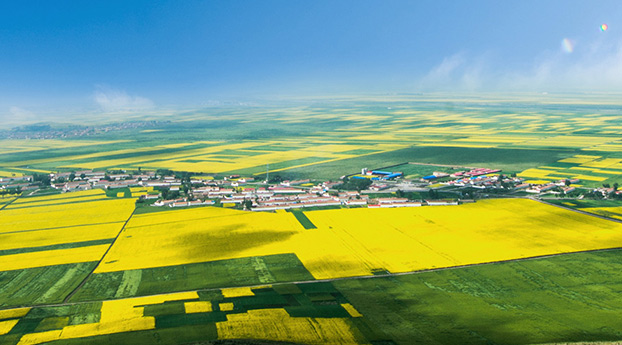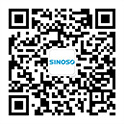Research on Water-saving strategies in resource-scarce areas
Release time:2015-01-09 Views:85
【作者】 顾涛;
【导师】 李远华; 崔远来;
【作者基本信息】 武汉大学 , 水利水电工程, 2012, 博士
【摘要】 ET,是作物棵间蒸发和植株蒸腾的总称,是土壤-植物-大气(SPAC)系统中的连续过程,是流域、区域水量平衡分析中最重要的参数。在气候演变研究、水资源规划与管理、节水灌溉、作物产量模拟预测等方面,ET的准确测定与估算都具有极为重要的现实意义。在我国节水灌溉技术推广实践中,在人类活动对水资源开发利用不断加剧情况下,研究了ET和降水间的关系,形成了工程性缺水和资源性缺水的定义,并把ET的概念延伸为水资源的消耗量,而不单纯是农田上作物生育期的需水量,形成了区域综合ET的定义,即区域水资源消耗量。在资源性缺水地区,开展资源性节水管理的理论和实践探索,对实现流域和区域相结合的水资源管理体制,是一个重要的研究方向。随着计算机和3S技术的迅猛发展,改变了传统ET监测以灌溉试验点上单一作物的试验观测值向面上放大的方法,利用遥感技术,使不同空间和时间尺度ET的监测来得更加直接,使ET的宏观管理成为可能,同时也为实施效果监测提供了技术手段,为基于ET的水资源管理奠定了重要基础。本文在充分总结世界银行贷款节水灌溉项目(WCP)和全球环境基金(GEF)海河流域水资源与水环境综合管理项目实施成果的基础上,面向海河流域这一严重的资源性缺水地区,论述了基于ET的水资源管理框架的构建,研究提出了流域和区域相结合基于ET的水资源管理节水策略理论体系。首先,总结了海河流域水资源的现状和存在的主要问题,分析了ET监测技术的研究进展,对比分析了传统ET监测技术和遥感监测ET技术的优劣,在资源性节水概念分析的基础上,提出了资源性缺水地区节水策略框架的主要构成。其次,在‘’Real Water Saving"的讨论中,分析了国内外关于资源性节水理念的不同定义,充分总结了世界银行节水灌溉项目(WCP)在节水灌溉管理中对资源性节水理论的探索和实践,进行了基础理论分析和实施监测评价评估,初步提出了基于ET的水资源管理框架,说明了资源性缺水地区应用基于ET的节水新理念的可行性。第三,总结了GEF海河项目中基于能量平衡的ET-WATCH模型在我国海河流域地区的应用和开发。分析了当前遥感监测ET技术发展的现状,总结了已有模型(如SEBAL、SEBS)的优势和不足,阐述了适合海河流域生态特点ET-Watch模型,建立了一系列的参数集,并对模型的验证和改进进行了技术分析,为流域尺度蒸发蒸腾的逐年动态监测提供支持。文章简要分析了2002年~2009年流域级遥感ET的数据情况。第四,着重阐述了流域级目标ET制定的过程,明确了目标ET的概念,提出了确定目标ET的原则和技术路线;结合海河流域的特点,根据GEF海河项目的实施,提出了以遥感监测ET模型、土壤墒情模型、二元模型等综合模型为基础的目标ET计算方法和流程;并从资源的角度出发,立足于当地可利用水资源量,考虑了降水(系列长短)、入海流量、地下水超采、南水北调和引黄等外流域调水等不同的因素,根据海河流域的发展,提出了现状、2010年和2020年三个不同水平年,9套情景方案,并通过目标ET计算流程,得出了9套方案下省套三级区的目标ET结果,并对不同方案进行了评估,提出了推荐的方案。第五,从管理实践需求出发,研究了县级层面实现基于ET的水资源管理节水策略的基本方法。提出了区域节水潜力的分析和不区域ET定额分配的方法,确定了不同作物的ET定额,以作物ET定额为评价标准,对超出该作物ET定额的像元值进行调整,获得定额管理节水潜力;根据确定的作物ET定额,并分析作物生育期内有效降水情况,采用水量平衡法推求作物净灌溉定额。结合北京市的ET管理实践,从县级管理层面,说明实现ET管理是可行的。最后,总结归纳了本文的研究成果和论文创新点,指出了本研究中需要进一步探讨的问题。
【Abstract】 ET is the total name of intercropping evaporation and plant transpiration, as well a continuous process in the SPAC system, and the most important parameter in river basin and regional water balance analysis. To accurately measure of ET is of very important and reality significance among climate evolvement research, water resources plan and management, water saving irrigation, and crop yield simulation and forecast. The relation between ET and precipitation was studied during the popularization practice of water-saving irrigation technique and under the situation of continuous development and utilization on water resources by people in our country, which formed the definition of Engineering-oriented Water Shortage and Resource-oriented Water Shortage, and extended the definition of ET as consumption of water resources instead of the water requirement in crop growing process in field. Thus the definition of regional integrated ET, regional water resources consumption, was posed. In resource-oriented shortage area, it is an important research direction that implementing the theoretical and practical exploration on resource-oriented water saving management, and that realizing the water resources management scheme by integration of river basin and regional. The rapid development of computer and3S (RS, GIS, and GPS) technique changed traditional ET measurement by enlarging the single crop experiment in irrigation experiment point to large scale. Remote-sensing technique made ET measurement at different special and temporal scale more directly, and made it possible for macroscopical management of ET, as well provided technical method to measure the implementing effect, established the base for water resources management based on ET. By comprehensively summarizing the implementing effect of Water Conservation Project Financed by World Bank and Global Environment Fund Hai Basin Integrated Water and Environment Management Project, the paper discussed the establishment of water resources management scheme based on ET for the Hai basin, which is a severe resource-oriented water shortage area. And put forward water saving strategic theory system of water resources management from river basin to region and from region to river basin based on ET.Firstly, the paper summarized the water resources situation and main problems existed in the Hai Basin, analyzed the research progress of ET measurement technique, contrastively analyzed advantage and disadvantage between traditional ET measurement technique and remote-sensing, and brought forward the main research emphases of water saving strategy scheme for resource-oriented water shortage area on the basis of analysis of resource-oriented water saving definition.Secondly, in the discussion of "Real Water Saving", the paper analyzed different definitions on resource-oriented water saving theory in China, comprehensively summarized the exploration and practice of Water Conservation Project Financed by World Bank on resources water-saving irrigation theory in water saving irrigation management; made basic theory analysis and implement measurement evaluation, primarily brought forward water resources management scheme based on ET, which proved that the feasibility to use new theory of water saving irrigation based on ET in resource-oriented water shortage area.Thirdly, the paper summarized the application and development of ET-WATCH model based on the energy balance in the Hai Basin. Analyzed the situation of the ET measurement and forecast technique development, summarized the advantage and disadvantage of existed models such as SEBAL, SEBS, brought forward ET-Watch model that is suitable for different ecology in the Hai Basin, established a series of parameter collection, and made technique analysis on the model validation and improvement, which provided support for annually dynamic measurement on evaporation and transpiration at river basin scale, as well briefly analyzed datus of remote-sensing ET from2002to2009at river basin scale.Fourthly, the paper expatiated the constitution process of target ET on river basin scale, defined the definition of target ET, brought forward the principle and technique route to confirm the target ET; according to the characteristic of the Hai Basin and the implementation of GEFHai Basin Integrated Water and Environment Management Project, put forward the computation method and flow of target ET, on the basis of remote-sensing measurement ET model, soil moisture model, dualistic model, and et al; from the point of resources and considering local water resources amount, precipitation, runoff in to the sea, over exploitation groundwater, and other factors such as southern water to the north, brought forward3different year level as present,2010, and2012,9scenario schemes, derived the target ET results under the9set scenario schemes through target ET computation flow, and put forward recommendation scheme through evaluation.Fifthly, the paper studied the basic method to realize water resources management water-saving strategy at the county level from the point of practical management requirement; put forward methods of regional water saving potential analysis and ET distribution in different area, confirmed the ET quota of different crop; taking crop ET quota as evaluation criterion, adjusted the pixel value that overtopped the criterion, so that the quota management water saving potential was acquired; according to the confirmed crop ET quota and analysis of effective precipitation in crop growth period, calculate crop net irrigation quota by water balance method. According to the ET management practice of Beijing city, ET management is feasible at county level.Finally, the key achievement and innovations were summarized in this paper. Some suggestions to improve the works as well as the future research outlook were given.
【关键词】 蒸发蒸腾; 资源性节水; 节水策略; 遥感监测ET; 目标ET; ET定额;
【Key words】 Evaporation and Transpiration; Resource-oriented Water-Saving; Strategic Study of Water-Saving; Remote-sensing ET; ET Target; ET Qouta;

















